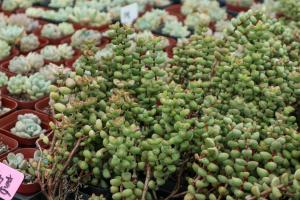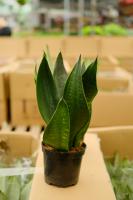How to Disinfect Pots for Plants
As a plant lover, you know how important it is to keep your plants healthy and happy. One of the ways you can ensure their well-being is by disinfecting the pots they are in. This will help prevent the spread of diseases, pests and fungi that can harm your plants. In this article, we will discuss the different methods you can use to disinfect pots for plants.
Method 1: Using Heat to Disinfect Pots
One of the easiest and most effective ways to disinfect plant pots is by using heat. This method works well for both clay and plastic pots. Here’s what you need to do:
Preheat your oven to 200°F (93°C).
Clean the pots thoroughly with warm, soapy water and rinse them well.
Place the pots in the oven and let them bake for about an hour.
Remove the pots from the oven and allow them to cool.
By using heat, you will kill any bacteria, viruses, or fungi that may be present on the pots. This method is particularly useful if you suspect your pots may have come into contact with a plant disease.
Method 2: Using a Bleach Solution to Disinfect Pots
Another effective way to disinfect pots is by using a bleach solution. This method is particularly useful for pots that are heavily soiled or have visible mold or mildew. Here’s what you need to do:
Mix one part bleach with nine parts water in a bucket or large container.
Submerge the pots in the solution and let them soak for at least 15 minutes.
Remove the pots from the solution and rinse them thoroughly with clean water.
Allow the pots to air dry before using them.
When using this method, make sure to wear gloves and work in a well-ventilated area to avoid inhaling the fumes from the bleach solution.
Method 3: Using Hydrogen Peroxide to Disinfect Pots
Hydrogen peroxide is also an effective disinfectant that you can use to clean your plant pots. The advantage of using hydrogen peroxide is that it’s safer and more eco-friendly than bleach. Here’s how to use it:
Mix equal parts of hydrogen peroxide and water in a spray bottle.
Spray the solution onto the pots and let it sit for at least 10 minutes.
Rinse the pots thoroughly with clean water.
Allow the pots to air dry.
This method is safe to use on both clay and plastic pots, and it will not harm your plants. However, make sure to avoid using this method on pots that have metallic surfaces, as hydrogen peroxide may cause oxidization.
Conclusion
Disinfecting your plant pots is an essential step in keeping your plants healthy and disease-free. By using one of the methods outlined above, you can ensure that your pots are clean and free from harmful pathogens. Remember to always wear protective gloves and work in a well-ventilated area when using bleach or other strong chemicals. With these tips, you can be sure that your plants will thrive in a clean and healthy environment.

 how many times do yo...
how many times do yo... how many planted tre...
how many planted tre... how many pine trees ...
how many pine trees ... how many pecan trees...
how many pecan trees... how many plants comp...
how many plants comp... how many plants can ...
how many plants can ... how many plants and ...
how many plants and ... how many pepper plan...
how many pepper plan...
































